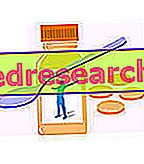By Dr. Davide Marciano
Carbohydrates: Friends or Enemies?
They do well, they hurt, they make you fat ... carbohydrates are always the center of imputation.
But are they really responsible for the increase in fat?
Carbohydrates and Insulin

In fact, carbohydrates are assigned a glycemic index (IG) which represents the speed with which they reach the blood stream and cause an insulin response.
The latter has the task of storing the nutrients taken from ingested foods.
As long as this hormone is maintained in the range of medium-low values, it does not cause any problems under the lipid aspect.
When it is high, it activates liposynthesis (manufacture of new fat molecules) and increases the volume of adipocytes (fat cells) making them larger.
Thus, the higher the insulin levels and the more fat we will store.
It should also be said that chronic conditions of hyperinsulinemia (excess of insulin) also represent an important risk factor for the development of type 2 diabetes.
Importance of the Index and Glycemic Load
Insulin levels rise dramatically following a meal rich in carbohydrates, especially if they have a high glycemic index.
The absolute quantity of carbohydrates ingested and their quality determines the glycemic load of the meal:
the greater the quantities of carbohydrates, and the higher their glycemic index, the higher the glycemic load of the meal.
The higher the glycemic index of a meal, the faster the blood will be enriched with glucose (the single molecules that make up a carbohydrate) creating a hyperglycemic reaction.
The magnitude of this peak will also be clearly influenced by the amount of carbohydrates taken (glycemic load).
A large increase in blood sugar will be mitigated by an equally abundant insulin production, which will "clean up" the blood from sugars, storing them in liver, muscle and fat cells. If the hepatic and muscle reserves of sugar (in the form of glycogen) are saturated, most of these carbohydrates will be converted into reserve fatty acids.
Furthermore, the abundant production of insulin causes reactive hypoglycemia accompanied by weakness, fatigue and hunger stimulation.
This process is called by some " the hell of carbohydrates " or "the vicious circle of insulin".
The Vicious Circle of Insulin
To better understand, let's take as an example the ingestion of a slice of dessert and see, through a scheme, what it involves:
Slice of chocolate cake (contains many carbohydrates with a high glycemic index) → glycaemia swell (hyperglycemia) → insulin response to "clean up" the blood stream → rapid drop in blood sugar (reactive hypoglycemia) → weakness, fatigue and HUNGER INCREASE → Further slice of chocolate cake → Start all over again.
It is a vicious circle, created by carbohydrates with a high glycemic index, from which one cannot escape if the insulin response is not mitigated, so if a selection is not made between the carbohydrate foods.
Which Carbohydrates Choose?
Ultimately, carbohydrates carry "problems" if they have a high glycemic index and are taken in industrial quantities.
So we must not say that carbohydrates are the number one enemy of the physical form, but it is their choice and their quantity that causes an increase in fat.
In fact, if we take carbohydrates with medium to low glycemic index in adequate quantities, we maintain stable blood sugar levels; consequently we will not have insulin fluctuations and we will not put on weight.
Furthermore, a stable insulin level induces constant energy levels, which allow us to have adequate energy throughout the day without warning of weakness, fatigue and hunger.
Among the recommended foods are mainly vegetables and fruit. Even pasta, if taken with moderation and with certain precautions, does not bear an excessive insulin response.
See also: The glucides



